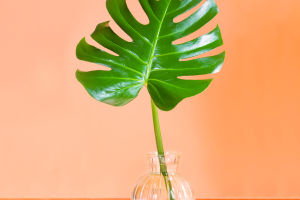Hyacinths are beloved for their rich fragrance and vibrant flowers, making them a favorite among flower enthusiasts.
However, growing hyacinths requires special care to ensure they remain healthy and produce beautiful blooms.
Planting Hyacinths
1. Choose the Right Bulbs
The size and quality of hyacinth bulbs directly influence the number and quality of flowers. When selecting bulbs, look for those with smooth skin, no disease spots, moderate weight, and firmness. Generally, bulbs with a diameter of more than 5 cm are ideal.
2. Soil and Containers
Hyacinths thrive in loose, well-drained sandy soil. You can use commercially available garden soil or create your own mix of garden soil, peat soil, and sand to ensure good drainage. When selecting a container, ensure it has drainage holes at the bottom to prevent water accumulation, which can cause bulb rot.
3. Planting Depth and Spacing
The planting depth of hyacinth bulbs should be 2-3 times the height of the bulb. When planting, place the bulb tip up and the bottom down, pressing gently into the soil before covering it with a layer of fine soil. Maintain a distance of at least 10-15 cm between bulbs to provide adequate space for growth.
4. Suitable Planting Time
The best time to plant hyacinths is in autumn, typically between September and October. Planting during this period allows the bulbs to accumulate nutrients during the winter dormancy period, preparing them for flowering in the spring.
Daily Care of Hyacinths
1. Light Requirements
Hyacinths prefer plenty of sunlight but can also grow in semi-shady environments. When planted indoors, they should be placed on a sunny windowsill. For outdoor planting, choose a sunny and wind-protected location.
2. Temperature Control
Hyacinths thrive in temperatures ranging from 15-25℃. Temperatures that are too high or too low can negatively affect their growth and flowering. In winter, protect them from the cold by covering them with a film at night or moving them to a warmer room.
3. Water Management
Hyacinths prefer a humid environment but are sensitive to waterlogging. When watering, ensure the soil remains moist but not overly wet. Water 1-2 times a week during the growing season to avoid water accumulation. After the flowering period, gradually reduce watering as the bulb enters the dormant period.
4. Fertilization
During the growing season, hyacinths require ample nutrients. Apply a base fertilizer before planting, such as decomposed organic fertilizer or slow-release fertilizer.
Throughout the growing season, apply liquid fertilizer once a month, ensuring a balanced ratio of nitrogen, phosphorus, and potassium to promote flower bud differentiation and blooming.
Pest and Disease Control
Hyacinths are susceptible to pests and diseases such as aphids, red spiders, and bulb rot. For aphids and red spiders, use diluted soapy water or specialized insecticides. To prevent bulb rot, avoid water accumulation and keep the bulbs dry. You can also use agents such as carbendazim for prevention and control.
Post-Flowering Treatment
After the flowering period, promptly remove the withered flowers to prevent them from consuming too many nutrients. Continue to water and fertilize as usual. When the leaves turn yellow, gradually reduce watering to allow the bulbs to enter a dormant period. Keep the dormant bulbs dry and place them in a cool, ventilated area to prepare for the next year's growth.


